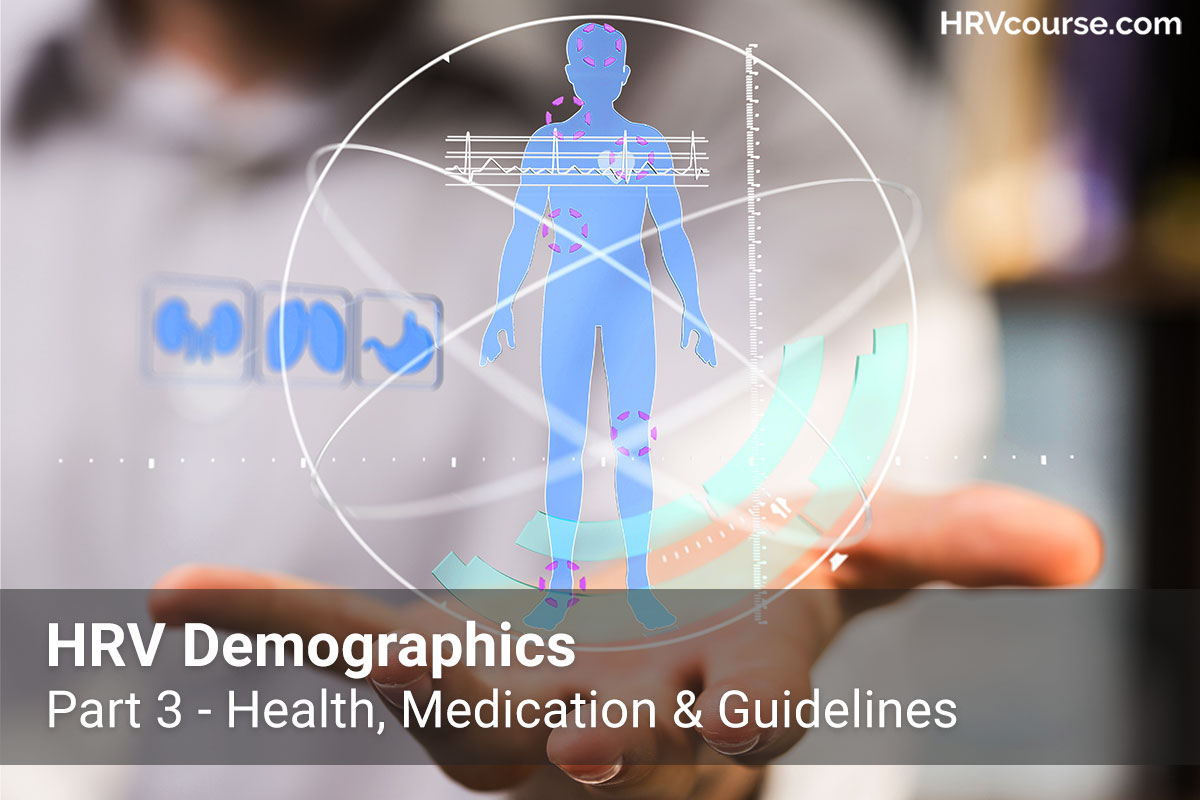What’s the difference between HR and HRV?
Heart rate (HR) is measured in beats per minute. It does not require exact times – just the average of the beats in a given time period. For example, a 60 beats per minute HR could mean 1 beat per second or it could mean an average of 1 beat every 0.5s, 1.5s, 0.5s, 1.5s, etc.
Heart rate measurement is a simple test that has been in existence for thousands of years due to the low-tech requirements for measurement.
Generally, a low HR indicates rest, while a high HR corresponds with exercise or exertion.
While heart rate focuses on the average beats per minute, heart rate variability (HRV) measures the specific changes in time (or variability) between successive heart beats. The time between beats is measured in milliseconds (ms) and is called an “R-R interval” or “inter-beat interval (IBI).”

While heart rate focuses on the average beats per minute, heart rate variability (HRV) measures the specific changes in time (or variability) between successive heart beats.
Generally, a low HRV (or less variability in the heart beats) indicates that the body is under stress from exercise, psychological events, or other internal or external stressors. Higher HRV (or greater variability between heart beats) usually means that the body has a strong ability to tolerate stress or is strongly recovering from prior accumulated stress.
At rest, a high HRV is generally favorable and a low HRV is unfavorable. When in an active state, lower relative HRV is generally favorable while a high HRV can be unfavorable.
HRV is actually an umbrella term for many different calculations and analysis methods. When applying these calculations correctly, the Autonomic Nervous System (ANS) can be precisely measured. The ANS is tied to every automatic process in the body and comprises of two main branches that control the body’s stress and recovery processes. It regulates blood sugar, body temperature, blood pressure, sweat, digestion, and much more. Using HRV to gain an understanding of the state of your ANS at any given moment is a huge advantage when tackling specific goals, identifying obstacles, or measuring progress.
Using HRV to gain an understanding of the state of your ANS at any given moment is a huge advantage when tackling specific goals, identifying obstacles, or measuring progress.
Since the ANS ties to so many biological systems and processes, HRV also links cardiovascular activity to the respiratory system, digestive system, and other recovery and stress related systems.
Since HRV focuses on the imperceptible changes between each heartbeat (in milliseconds), it is much more complex and requires higher degrees of accuracy than heart rate. But thanks to recent technology improvements, consumer grade heart monitors and smartphone apps can do all of the measurement work and neatly present the insights needed for decision making.
The Pros and Cons of Heart Rate
Pros
- Easy to measure
- Can measure during exercise
- Can target aerobic exercise or specific “zones”
- No need for extreme accuracy to use it
- Great gauge of cardiovascular exertion during exercise
- Vast numbers of devices and wearables of varying quality/accuracy exist
Cons
- Limited to mainly measuring cardiovascular activity
- At rest, heart rate is a vague indicator of internal activity at best and inconsistent at worst
- Vast numbers of devices and wearables of varying quality/accuracy exist
The Pros and Cons of Heart Rate Variability
Pros
- The most precise non-invasive measurement of Autonomic Nervous System activity (responsible for recovery and the body’s response to stress among other things)
- Integrates the nervous system, cardiovascular system, and respiratory systems
- Able to detect physical, digestive, environmental, psychological and other stressors
- Can be measured by affordable consumer-grade heart rate monitors
- Only takes 2 minutes per day for 95% of the benefit
- Can be used to “train” the brain and nervous system to operate at peak performance with live biofeedback
Cons
- Difficult to measure during exercise or while moving (though unnecessary usually)
- Accuracy requirements limit the use of some trendy wearable HR monitors
- Sometimes presented as a “magic bullet”
- Various measurements of HRV can be confusing if presented improperly
When To Use Heart Rate
Heart rate and heart rate variability are often considered similar metrics, but they have completely different uses when used correctly.
Heart rate is best used during exercise. It is a great tool for training the cardiovascular system or monitoring the effects of training on the cardiovascular system in real time.
Heart rate is best used during exercise.
When To Use Heart Rate Variability
HRV is best used during a rested state (usually first thing in the morning or during rested activities such as meditation). It is a great tool for understanding overall health, resilience, and ability to tolerate stress from all sources.
HRV is best used during a rested state.
HRV can be used as a daily check-in with the body to determine its readiness to tolerate stress on a given day. In this regard, HRV is commonly used to optimize and individualize training programs based on a person’s’ readiness or recovery state. Also, HRV can be used to determine how various lifestyle choices affect health and performance by trending HRV and the correlated events over time. Luckily, apps do the hard work for you!




